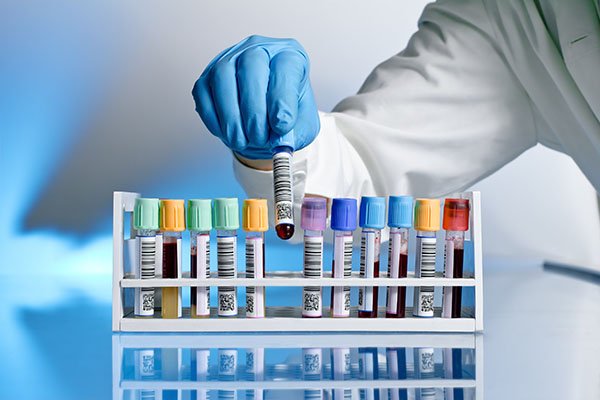The Crucial Role of Medical Devices in Improving Health Equity
Summary
- Medical devices play a crucial role in improving health equity by providing equal access to quality healthcare for all individuals.
- By utilizing state-of-the-art medical equipment, healthcare facilities can offer better diagnosis and treatment options regardless of a patient's background or location.
- Through proper management of hospital supplies and equipment, Healthcare Providers can ensure that resources are allocated efficiently to reduce disparities in healthcare outcomes.
The Role of Medical Devices in Improving Health Equity
Health equity refers to the concept of ensuring that all individuals have equal access to healthcare resources and opportunities. In the United States, disparities in healthcare outcomes have been well-documented, with certain populations facing higher rates of illness, lower life expectancy, and limited access to quality healthcare services. Medical devices play a crucial role in improving health equity by providing necessary tools for diagnosis, treatment, and monitoring of patients.
Equal Access to Quality Healthcare
One of the key ways in which medical devices can improve health equity is by providing equal access to quality healthcare services for all individuals. By ensuring that healthcare facilities are equipped with the latest medical equipment, patients can receive accurate diagnosis and effective treatment regardless of their background or location. For example, advanced imaging devices such as MRI machines and CT scanners can help Healthcare Providers identify and address health issues in a timely manner, leading to better outcomes for patients.
Enhanced Diagnosis and Treatment Options
Medical devices also play a crucial role in expanding options for diagnosis and treatment, particularly for underserved populations. For example, remote monitoring devices and telemedicine technology can help individuals in rural or low-income areas access healthcare services without the need to travel long distances. By utilizing these technologies, Healthcare Providers can reach a wider range of patients and provide timely interventions to improve health outcomes.
Preventative Care and Monitoring
In addition to improving diagnostic and treatment options, medical devices also play a key role in preventative care and monitoring of chronic conditions. For example, wearable devices such as fitness trackers and glucose monitors can help individuals track their health metrics and make informed decisions about their lifestyle choices. By promoting preventative care and early intervention, medical devices can help reduce disparities in healthcare outcomes by addressing health issues before they escalate.
Efficient Management of Hospital Supplies and Equipment
In order to fully leverage the potential of medical devices in improving health equity, Healthcare Providers must ensure efficient management of hospital supplies and equipment. By optimizing the allocation and utilization of resources, healthcare facilities can maximize the impact of medical devices and reduce disparities in healthcare outcomes.
Inventory Management and Procurement
Effective inventory management is crucial for ensuring that healthcare facilities have access to the necessary supplies and equipment to provide quality care to patients. By implementing advanced procurement systems and inventory tracking technologies, Healthcare Providers can streamline the Supply Chain process and reduce waste. This not only improves the efficiency of healthcare operations but also ensures that resources are allocated equitably to meet the needs of all patients.
Maintenance and Upkeep of Medical Devices
Proper maintenance and upkeep of medical devices are essential for ensuring that equipment functions optimally and delivers accurate results. Healthcare facilities must implement regular maintenance schedules and quality assurance protocols to prevent breakdowns and ensure the reliability of medical devices. By investing in staff training and equipment updates, Healthcare Providers can extend the lifespan of medical devices and improve healthcare outcomes for all patients.
Data Analytics and Performance Monitoring
Data analytics plays a key role in optimizing the utilization of hospital supplies and equipment. By analyzing performance metrics and usage patterns, Healthcare Providers can identify areas for improvement and implement targeted interventions to enhance efficiency. By leveraging data-driven insights, healthcare facilities can make informed decisions about resource allocation and ensure that medical devices are utilized effectively to reduce disparities in healthcare outcomes.
Conclusion
In conclusion, medical devices play a crucial role in improving health equity and reducing disparities in healthcare outcomes. By providing equal access to quality healthcare services, enhancing diagnosis and treatment options, and promoting preventative care and monitoring, medical devices empower Healthcare Providers to deliver better outcomes for all patients. Through efficient management of hospital supplies and equipment, healthcare facilities can maximize the impact of medical devices and ensure that resources are allocated equitably to address the needs of underserved populations. By investing in state-of-the-art medical equipment and implementing advanced inventory management strategies, Healthcare Providers can make significant strides towards achieving health equity for all individuals in the United States.

Disclaimer: The content provided on this blog is for informational purposes only, reflecting the personal opinions and insights of the author(s) on the topics. The information provided should not be used for diagnosing or treating a health problem or disease, and those seeking personal medical advice should consult with a licensed physician. Always seek the advice of your doctor or other qualified health provider regarding a medical condition. Never disregard professional medical advice or delay in seeking it because of something you have read on this website. If you think you may have a medical emergency, call 911 or go to the nearest emergency room immediately. No physician-patient relationship is created by this web site or its use. No contributors to this web site make any representations, express or implied, with respect to the information provided herein or to its use. While we strive to share accurate and up-to-date information, we cannot guarantee the completeness, reliability, or accuracy of the content. The blog may also include links to external websites and resources for the convenience of our readers. Please note that linking to other sites does not imply endorsement of their content, practices, or services by us. Readers should use their discretion and judgment while exploring any external links and resources mentioned on this blog.

